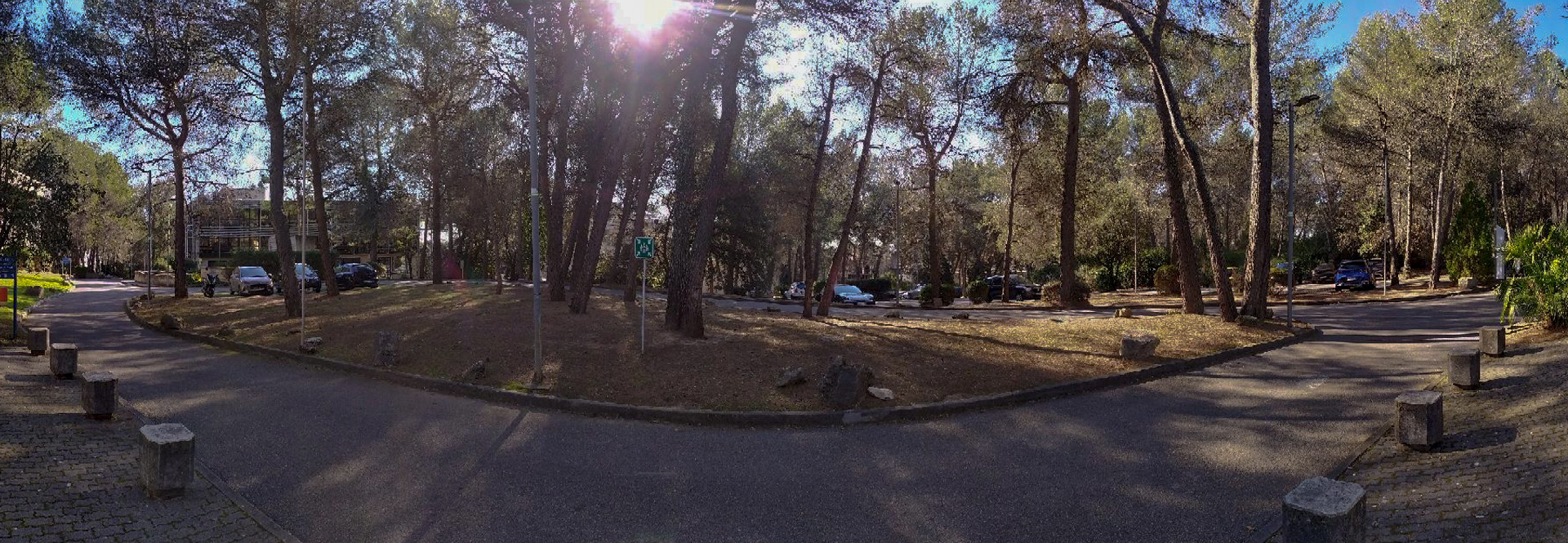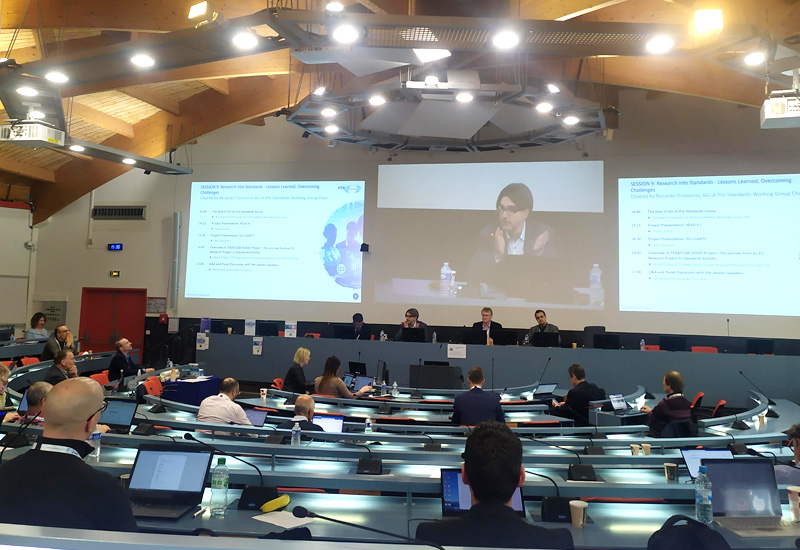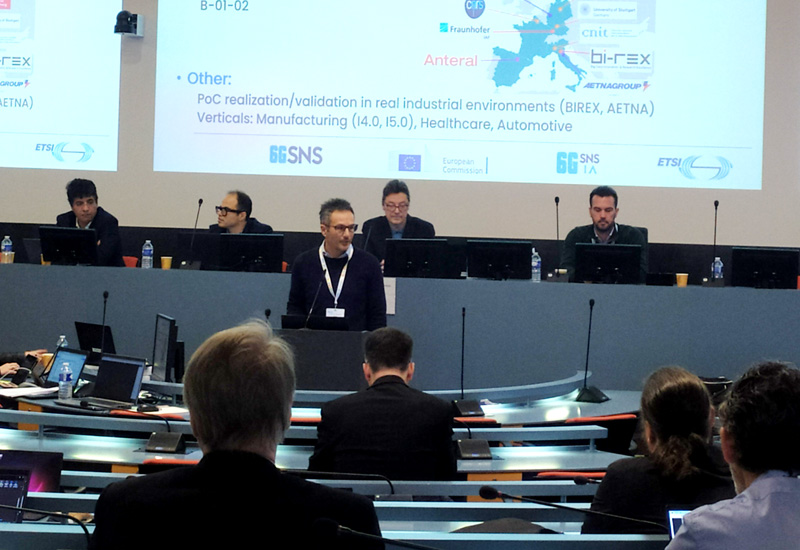First “post-kickoff” plenary of ISG THz
First “post-kickoff” plenary of ISG THz
Mate Boban, ISG THz Vice Chair
ISG THz has had its first “post-kickoff” plenary on Feb 8-10, 2023. Pleasant sunny weather and occasional surprising wind gusts have greeted us in ETSI HQ in Sophia Antipolis; overall, a welcome weather change for most participants hailing from the northern European locations, myself included.

Now that we have done the hard work of ISG formation and kick off, and since this is the first in a series of blog posts related to the ISG THz, it might be a good time to briefly introduce the ISG THz to the rest of the world, including a short “how it all started” story. To the best of my knowledge, the idea of forming the ISG THz can be traced back to an interesting session that was part of the ETSI Virtual Event on Boosting the Impact of Research & Innovation through Standardization conference in Nov 2020: https://www.telecomtv.com/content/etsi-r-and-sd-event/thz-technology-the-time-for-standardization-has-come-40182/. During the session, Guy Daniels, Markus Mueck, and Rahim Tafazolli pondered whether it was the right time to start discussing THz in (pre)standardization fora. This initial discussion kicked of the early incubation phase of the group, and I remember some having a chat on the topic with Markus Mueck all the way back in Jan 2021, where we agreed to start gathering the support for the ISG. Following the incubation phase of the group in 2021 and early 2022, where the stakeholders prepared the groundwork for the formation, carefully crafted its plan, and gathered support (ending up with 25 founding members, the largest number of any ISG so far!), ETSI ISG THz has been approved by the ETSI Board in September 2022. This was followed by its successful kick-off meeting on 8th of December, 2022, in Sophia Antipolis, where the group already counted 30+ members. As of the time I am writing this (Feb 2023), there are 41 members and 2 participants to the group, a commendable number for such a young ISG.
During the kickoff and in subsequent online meetings, two further key elements were completed: i) formation of the leadership team; and ii) definition of the work items. In terms of the leadership team, we are lucky to have such a strong set of experts, coming from diverse backgrounds and representing important stakeholders.
Leadership team:
- Chair: Thomas Kürner, TU Braunschweig IST.hub
- Vice-Chair: Mate Boban, Huawei TECH GmbH
- Vice-Chair: Sana Salous, Durham University
- Vice-Chair: Sharad Sambhwani, Apple France
- Secretary: Javier Lorca, InterDigital
With leadership team sorted, a few words on the planned technical work of the group would not go amiss. In particular, as specified in the Terms of Reference for (ToR) the group (https://portal.etsi.org/Portals/0/TBpages/THz/Docs/ToR%20THz.pdf), the focus of the ISG THz is to establish the technical foundation for an efficient evaluation and development of THz communication systems. In particular, ISG THz is tasked with preparing a systematic output on channel models, system parameters, and evaluation assumptions for the evaluation of THz communication systems. With this important mandate in mind, the group approved and will put its full efforts on the following four WIs:
- Identification of use cases for THz communication systems (rapporteur: Cristina Ciochina-Duchesne, Mitsubishi Electric)
- Identification of frequency bands of interests for THz communication systems (rapporteur: Per Hjalmar Lehne, Telenor)
- Channel measurements and modeling in THz bands (rapporteur: Mate Boban, Huawei
- RF Hardware Modeling (rapporteur: Sharad Sambhwani, Apple France)
The above WIs comprise well the key tasks that need to be addressed by the group, and the rapporteurs that took up the tasks are very well matched to the content of WIs (i.e., one of the biggest multinational industrial players at the helm of use case definitions, a major operator in charge of the frequency bands, a major vendor in charge of channel measurements and modeling, and a major device manufacturer in charge of RF hardware modeling).
Before delving into ISG THz plenary, it is worthwhile mentioning it was preceded by the (very successful!) ETSI Research Conference (https://www.etsi.org/events/2130-etsi-research-conference), which was held on Feb 6-8 in ETSI HQ as well. This allowed many of the ISG THz members to understand the broader “research to (pre)standardization” landscape presented during the Research Conference. Furthermore, the conference featured 20+ projects from SNS JU Phase I (https://smart-networks.europa.eu/sns-phase-1/), some of which directly related to the ISG (e.g., TIMES, TERRAMETA, 6GSHINE, and TERA6G). The good practices encouraged by ETSI’s “research to (pre)standardization” effort were on full display during the week. One example is the interaction between SNS TIMES project (https://wilab.cnit.it/times/) and ISG THz; five TIMES consortium members were instrumental in the formation of ISG THz and are driving the activity of the group as members of the leadership team and work item rapporteurs. Several other projects have either contributed founding members during the ISG formation phase, or plan to actively contribute their output to the ISG.
 |  |
ETSI Research Conference discussing ISG THz-related activities. | |
Finally, onto our plenary meeting. With more than 30 contributions prepared for the meeting, the plenary itself saw the start of the work in earnest on all four work items. First, all of the work item rapporteurs have presented drafts of the reports for each of the work items, which will be finalized by the next plenary. The discussions on use cases, including the format and necessary definitions needed for them has progressed well, with particular focus on translating use cases to channel measurement scenarios. Initial forays into the analysis of available spectrum above 100 GHz have also been done, with the group agreeing to provide relevant regulatory situation across all major markets. In terms of channel measurements and modeling, the group saw first channel measurements contributed, along with initial proposals for modeling, both in terms of channel modeling essentials (e.g., path loss) as well as the approach to modeling (e.g., geometry based stochastic, deterministic, and machine learning models). Finally, the RF hardware modeling saw the first contributions, in particular on phase noise modeling – a key modeling component of particular importance for THz bands.
Apart from the work on the WIs, ISG THz will closely collaborate with other groups in ETSI, in particular with ETSI ISG mWT and ETSI ISG RIS. To that end, alignment between ISG THz and ISG mWT leadership is ongoing, whereas ISG THz and ISG RIS – benefitting from having their plenaries at the same time and the same place – held a joint session where agreement was made on cooperation. In particular, any work that is overlapping the two groups (with the most obvious one being operation of RISs in bands above 100 GHz) will be timely aligned between the two groups.
All in all, busy days ahead for ISG THz! With that, I am happy to wrap up this inaugural ISG THz blog post, apart from mentioning that our next plenary meeting will be held in Durham, UK in June. We look forward to seeing you there!

